Its mission matters for all of us. Working to enhance economic security and improve our quality of life, National Institute of Standards and Technology (NIST) is a non-regulatory agency of the U.S. Department of Commerce. To help federal agencies implement the Federal Information Security Modernization Act of 2014 (FISMA), NIST develops and publishes standards and guidelines to help agencies – and the contractors they work with – protect information and information systems.
NIST Special Publication 800-53 (SP 800-53) is part of the Special Publication 800 series. Its focus is the Information Technology Laboratory’s (ITL) research, guidelines, and outreach efforts on information system security. NIST 800-53 also covers ITL’s actions across the ecosystem of government, industry, and academia.
Every U.S. federal government agency and some contractors are required to comply with select controls from NIST SP 800-53, as determined by the department, agency, or program to ensure sensitive data is protected.
NIST SP 800-53 includes 1,189 individual controls plus a variety of control enhancements categorized across key areas, including Risk Assessment, Contingency Planning, Media Protection, and Access Control, among others
What is the purpose of NIST SP 800-53?
For any organization, public or private, due diligence is essential to effectively managing information security and privacy risk. NIST Special Publication 800-53 focuses on security and privacy controls for all U.S. federal information systems including in some cases, national security systems.
With the complexity of today’s information systems, the selection of appropriate security and privacy controls is a critical task with significant implications for the confidentiality, integrity, and availability of the system and its information. NIST SP 800-53 provides specific guidelines for building effective security and privacy assessment plans. SP 800-53 also provides a comprehensive set of procedures to help organizations assess the effectiveness of the controls used in information systems and organizations supporting the federal government.
Flexibility and broad coverage are built into the framework of SP 800-53 to cover critical areas including incident response, business continuity, access control, and disaster recovery. These guidelines help improve information security of federal systems by:
- Enabling more consistent and repeatable assessment of security and privacy controls
- Clarifying the risks of operating and using federal information systems to organizational operations, assets, human resources, and the nation
- Facilitating more cost-effective assessments of security and privacy controls, and
- Creating more reliable information for officials to comply with federal laws, directives, and policies
As technology evolves and threats continue to escalate, a multi-tiered approach to risk management is essential. The NIST SP 800-53 guidelines help heighten the security of information security across the federal government.

NIST 800-53 Revision 5
NIST SP 800-53 continues to evolve to integrate advancements in technology and data management best practices. Involving several rounds of revision, the final, most recent version—NIST SP 800-53 Revision 5—is the outcome of a multi-year effort first introduced in 2020 and open to public comment through October 1, 2021.
NIST SP 800-53, Revision 5 articulates the reigning standards for the next generation of Security and Privacy Controls for Information Systems and Organizations, for the Federal Government, and every sector of critical infrastructure. Public and private organizations must have a proactive, systematic program to ensure its most critical systems and services are reliable, trustworthy, and resilient to protect our country’s economy and national security.
7 primary distinctions between NIST SP 800-53 revision 4 and revision 5

Revision 5 supersedes Revision 4.
- Privacy is emphasized in Revision 5, which reflects a broader effort to add privacy controls to all Federal Information Security Management Act (FISMA) regulations. In NIST SP 800-53 Revision 5, there is a new privacy control family called Personally Identifiable Information Processing and Transparency. Previously, privacy controls were relegated to an appendix to the main catalog of Revision 4.
- Another timely and relevant change in Revision 5 is the addition of Supply Chain Risk Management and Program Management categories which expands on Supply Chain Risk Management (SCRM) concepts outlined in Revision 4. Likewise, the Program Management family expands on the Information Security Program Management controls that were addressed in Appendix G of Revision 4.
- The addition of the very latest state-of-the-practice controls aims to leverage the latest threat intelligence and cyber-attack data to improve resiliency, systems design, governance, and accountability.
- Likewise, the separation of control selection processes from the controls themselves accommodates usage across communities, from systems engineers and security architects to mission and business owners.
- Along with new and updated controls, a greater emphasis on outcomes helps improve an organization’s security posture. Revision 5 incorporates rewritten control statements that focus on the security goal of the action instead of only identifying responsibility for implementing the control. The change reinforces the value of broad cooperation and collaboration to achieve results.
- Revision 5 also clarifies the controls for non-government organizations and contractors which may have different roles than government organizations. NIST SP 800-53 reflects more flexibility for non-government entities seeking compliance.
- Another distinction in Revision 5, detailed in a supplementary publication (NIST SP 800-53B), involves the separation of control baselines from the control catalog. The publication provides guidance for tailoring the three security control baselines—low impact, moderate impact, and high impact—to specific communities based on an organization’s technologies and environments of operation. NIST rationale for the change aims to enable different communities of interest and support a broader range of cybersecurity lexicons and risk management approaches.
DTS welcomes the opportunity to work with federal agencies and other government contractors striving for compliance and security. It takes superior knowledge to stay ahead of cyber threats and protect privacy and critical assets.


